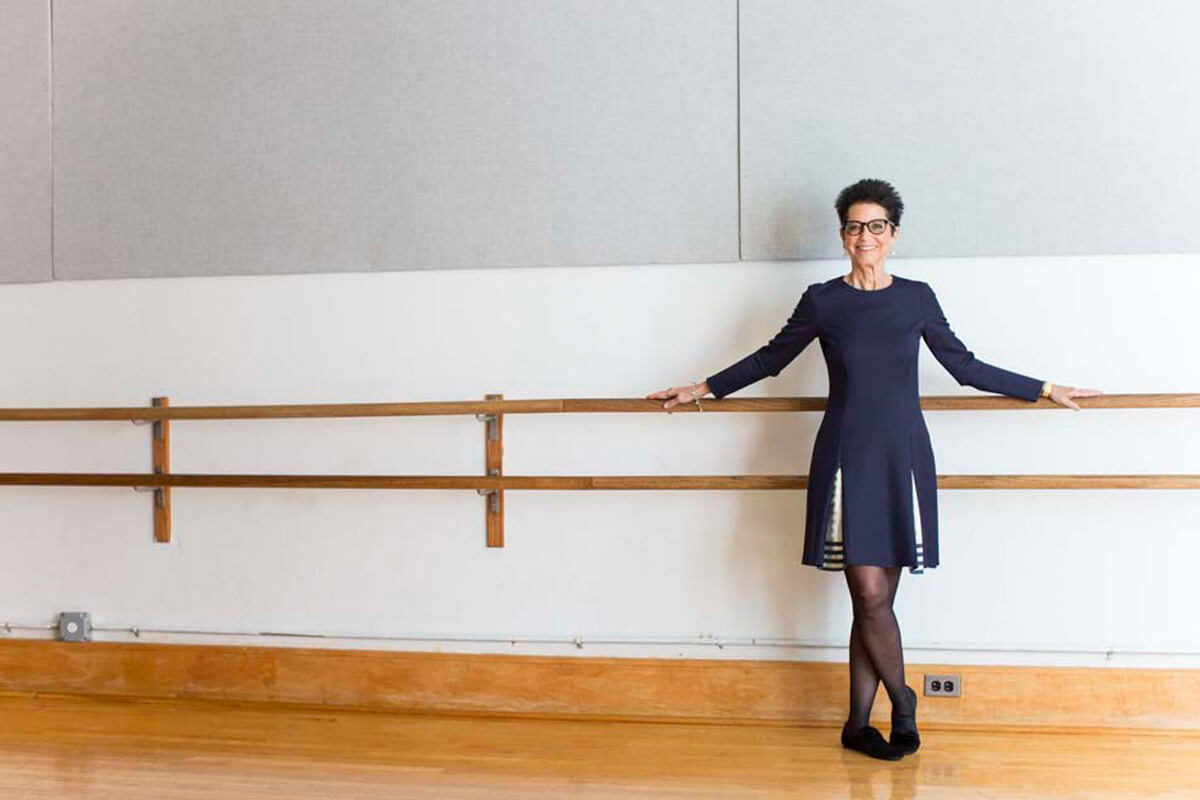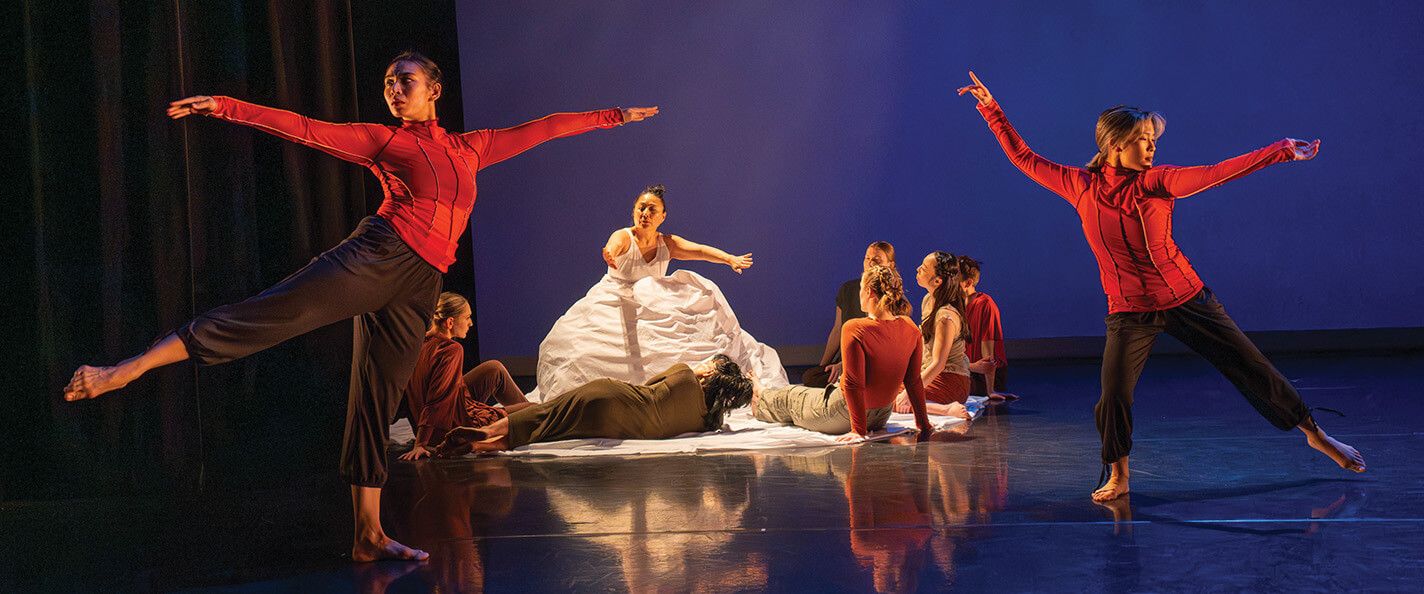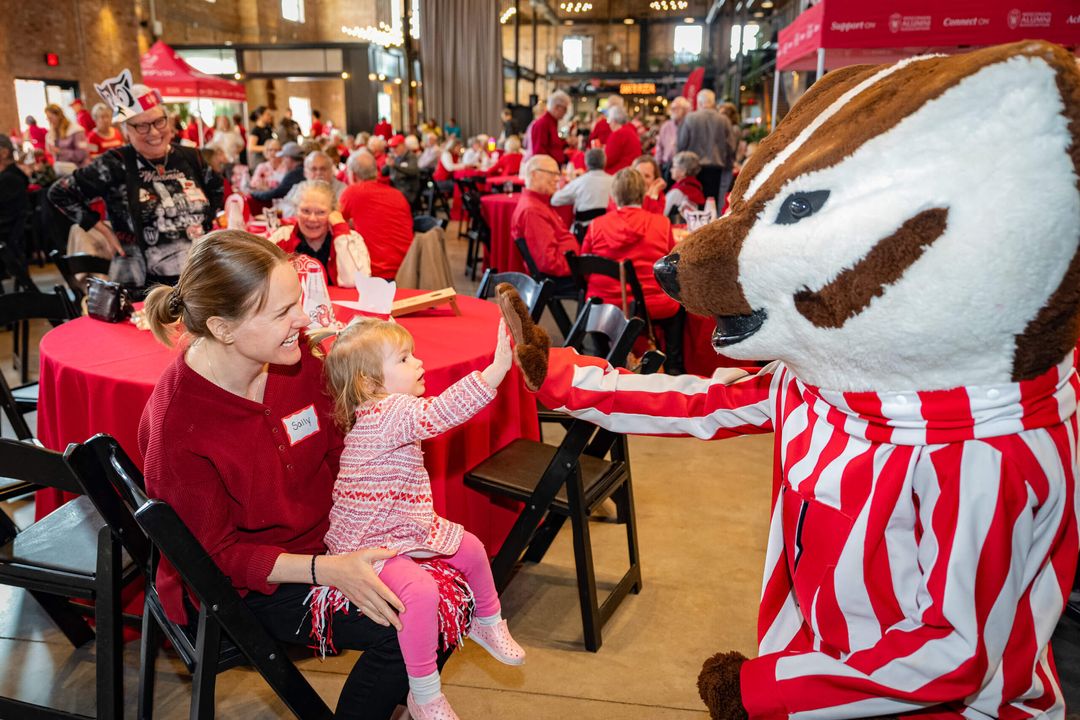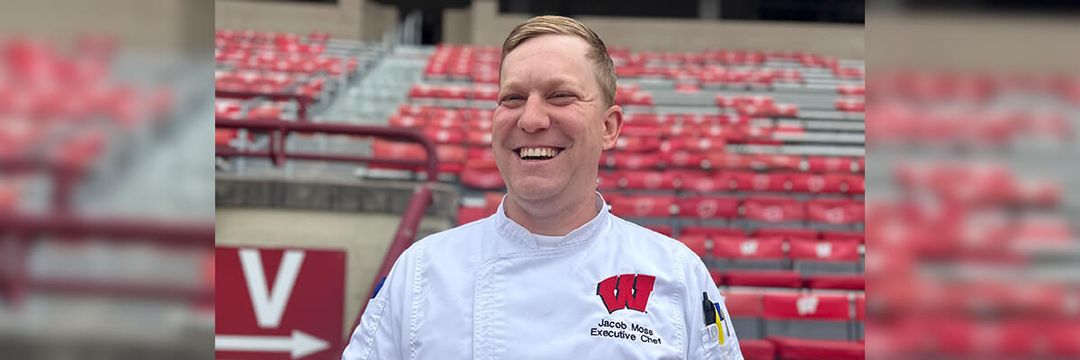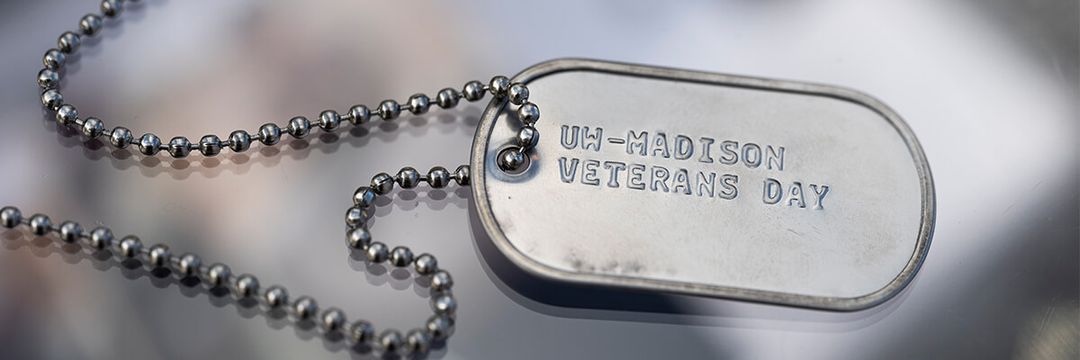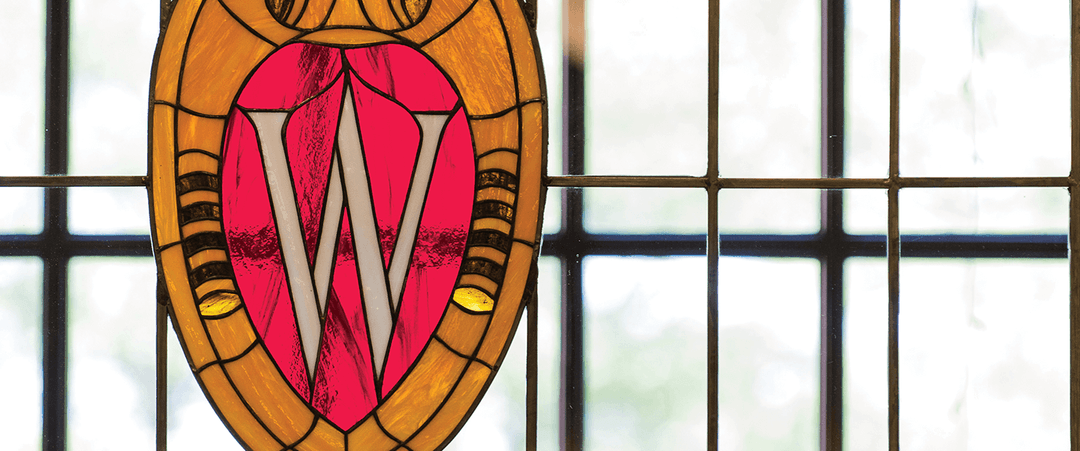The classic image of Margaret H’Doubler 1910, MA1924 shows her at the front of her classroom, students rapt, as she lectures with a skeleton.
H’Doubler is famous for many things, of course, not least of them founding, at the UW in 1926, the first academic dance program at any American university. She also established Orchesis, the UW’s modern dance troupe, which launched the careers of many of the nation’s leading dancers.
But the skeleton sticks out in memory. H’Doubler used it to teach dancers that what they did was about more than art: it was also about physiology. She was, prior to creating the Dance Department, a coach and physical education teacher. She’s the reason why, at UW–Madison, dance has close ties with kinesiology. She didn’t just want her students to be artists; she wanted them to be anatomists, to know what kind of motion the human body was and wasn’t capable of. How the shin bone connects to the knee bone, and the knee bone connects to the thigh bone — those connections govern what dancers can do, what art they can create.
The skeleton is symbolically important, too, because while bones are bones, a skeleton is connectivity. And since 1926, UW dance has been connected to almost every important dancer in America. One instructor teaches a student, who then mentors another, through nearly a century of relationships.
Mind you, skeletons aren’t the imagery that the Dance Department itself uses. The department and
its faculty prefer the analogy of a family tree.
“Or what’s that Kevin Bacon saying?” asks Li Chiao-Ping, the longtime dance professor who’s overseeing the department’s centennial celebration.
“Degrees of separation? Something like that. We can probably trace everyone [involved in dance and dance education today] back to someone who was influenced by the ideas that were innovated here.”
As it approaches its 100th birthday, UW–Madison’s Dance Department is measuring its legacy in the ways that it has extended its influence, person to person and generation to generation. It would take a thick book to list the links that show the UW’s connections to every important modern dancer and dance educator — all the leaves on this tree, if you like the department’s chosen metaphor, or if you don’t, all the metatarsals and distal phalanges on this skeleton. The point is, we can’t list them all, so instead we offer just the trunk, a very abbreviated list of UW dance’s legacy of connections.
The Founder
“We’ll create movement out of our knowledge of body structure, no imitation. We’ll study movement as movement first.” — Margaret H’Doubler
The first name on any list of prominent American dancers should be Margaret, and the second, silent H and all, should be H’Doubler — pronounced DOH-bler. As an undergrad at the UW, she studied biology and philosophy, and her first UW job was to coach women’s basketball, swimming, and baseball. This led to a teaching job in the Department of Physical Education. In 1917, she had the idea of teaching dance — dance is aesthetic, and it struck people as feminine, so it made a good cover for teaching women about anatomy. She took the name for her modern dance troupe, Orchesis, from a Greek term for “expressive gesture,” and she authored the now-classic textbooks Manual of Dancing (1921) and Dance: A Creative Art Experience (1940). Her eight principles of dance composition are climax, transition, balance, sequence, repetition, harmony, variety, and contrast. And she helped popularize modern dance, which emphasizes natural body movement and expression rather than technique.
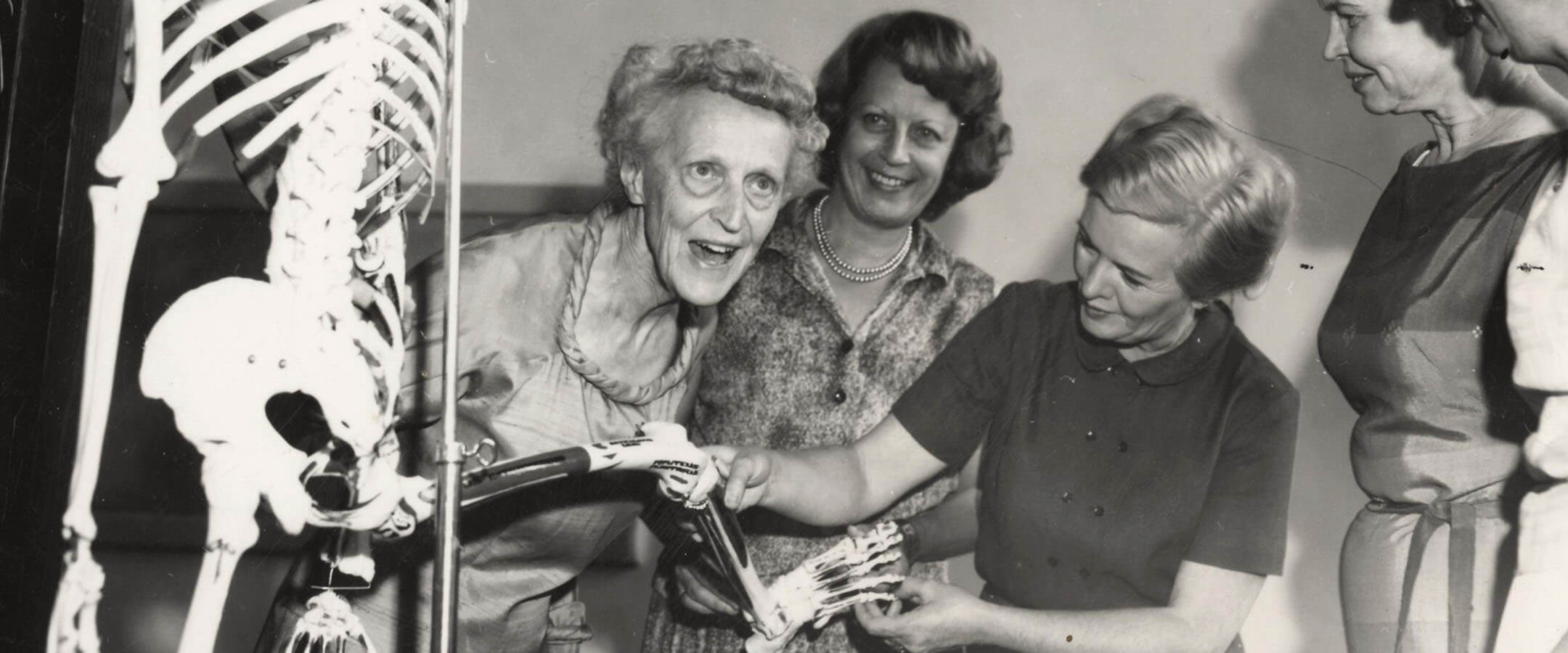
The Radical
“The body is living art.” — Anna Halprin ’42
One of H’Doubler’s students, Anna Halprin, led dance even further from classical forms into the postmodern movement. After graduating from the UW, she founded California’s Tamalpa Institute — a creative arts training program — and she developed a creative collaboration method called RSVP Cycles: resources, score, valuation, and performance.
The Star
“Whenever Mary’s name was posted, we all knew that this would be a very special experience.” — Christian Holder, dancer and choreographer
While a student under H’Doubler, Mary Hinkson ’46, MS’47 joined Orchesis, where her performance in Orpheus and Euridice gained national attention. After she graduated, the UW hired her as one of its first Black female instructors, but she didn’t stay long. Hinkson and her friend Matt Turney ’47 became the first two Black dancers for the prestigious Martha Graham Dance Company. Hinkson then became one of that company’s most prominent modern dancers. She later taught at Juilliard, the Dance Theatre of Harlem, and the Ailey School.
Keeper of the Flame
“In the future, when we launch our MFA program in dance, that will largely be due to Buff Brennan.” — Li Chiao-Ping
A member of the UW’s dance faculty from 1967 until 2002, Mary Alice “Buff” Brennan MS’67, PhD’76 served as chair three times. She helped develop the national standards for dance education, and she was on the team that created the UW’s interarts and technology degree program. She kept the history of the Dance Department. In 2007, she published a biography titled Margaret H’Doubler: The Legacy of America’s Dance Education Pioneer. She also donated funds to help the department set up a master of fine arts program, which will begin in fall 2026.
The Philosopher
“Postmodern choreographers of the ’60s were not united in terms of their aesthetic. Rather, they were united by their radical approach to choreography, their urge to reconceive the medium
of dance.” — Sally Banes
In the 1970s, Sally Banes made her name as a writer, critic, and choreographer. She graduated from the University of Chicago, and she was part of the Collective, a Chicago theater troupe, and then helped found that city’s Community Discount Players. She authored the books Democracy’s Body and Terpsichore in Sneakers, influential studies of postmodern dance. In 1991, she joined the UW faculty, and she chaired the department from 1992 to 1996. Her stature helped attract new instructors. “Everyone in contemporary dance, especially my generation, would know about Sally Banes,” says Li. “I read her work when I was an undergraduate — her important scholarship writing about dance in the ’60s especially.” Li joined the faculty in 1993 and is now the Sally Banes Professor of Dance. Jin-Wen Yu, the department’s current chair, joined in 1996.
The Talent Scout
“I was at [SUNY] Brockport and this older, white woman walks into the theater — big hair, tall, strong — and she outdances everybody on the floor, not because she’s performing harder, but because she understood the interiority of the movement. I felt like I was looking at an elder.” — Chris Walker, professor of dance
Claudia Melrose ’65 joined the UW’s dance faculty in 1985 and later served as chair. She scouted for some of the current faculty members, including making first contact with Li and then also recruiting Chris Walker, dance professor and current director of the UW’s Division of the Arts. “When she called me,” says Walker, “I realized, wait, [UW–Madison had been] the home of Margaret H’Doubler. My
mind exploded. I had to come.”
The Influencer
“Jody is someone who has been doing the work on the ground, teaching and mentoring teachers for decades.” — Chell Parkins
“Jody [Gottfried] Arnhold has been a mover and shaker in the dance education world,” says Li, speaking metaphorically as well as literally. Gottfried Arnhold may glide, turn, leap, and lunge, but she also influences, especially “for what she has done through dance education.” After completing her studies at UW–Madison and earning her master’s in dance at Columbia University’s Teachers College, Gottfried Arnhold ’65 pioneered dance programs and pedagogy in New York City public schools, where she is leading a movement to reinvigorate dance education. She helped found Hunter College’s master’s program in dance education and a doctoral program at Columbia Teacher’s College, where the Arnhold Institute supports work in dance education research, policy, and leadership. Arnhold also founded New York’s renowned Dance Education Laboratory at the 92nd Street Y. “We’ve had numerous students go on to study at the Dance Education Laboratory in New York due to her support,” says Li. Gottfried Arnhold supports dance education at the UW through the Arnhold Directorship in Dance Education, which is currently held by Chell Parkins. “Jody must have had a profound experience with dance here,” says Parkins. “She and I both believe that all children should have access to dance, that it should be a part of every child’s school day experience, that it is a core subject just like all of the other core subjects. She’s a wonderful teacher. And she’s also wonderful at recognizing other people’s strengths and giving them the space to lead.”
